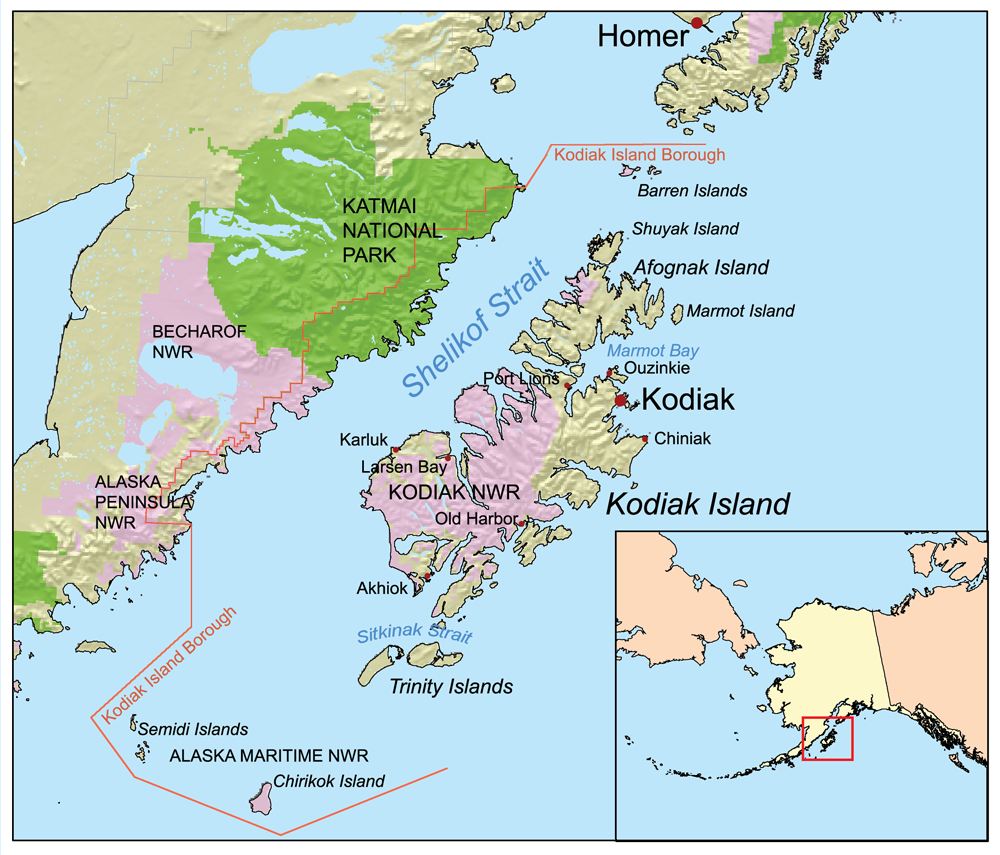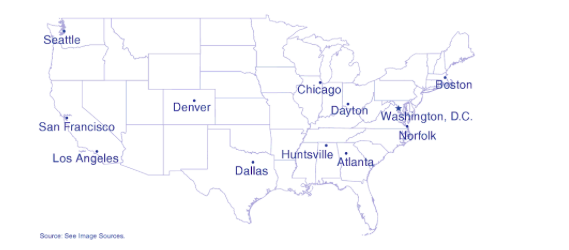|
Native Village Of Karluk
The Native Village of Karluk is a federally recognized Alutiiq Alaska Native tribal entity. History Native Village of Karluk is headquartered in the city of Karluk in the Kodiak Island Borough of Alaska. As of 2005, the tribe has 189 enrolled citizens. In 2023, the Native Village of Karluk released a viral advertisement that offered to cover all expenses for any two families who agreed to move to Karluk. Thousands of people responded to the advertisement. The Karluk Tribal Council produced the advertisement due to the community's dwindling population. In 2023, only 37 people lived in Karluk. See also *List of Alaska Native tribal entities This list of Alaska Native tribal entities names the federally recognized tribes in the state of Alaska. The Alaska Native Claims Settlement Act of 1971 explains how these Alaska Native villages came to be tracked this way. This version was upda ... References {{reflist External linksList of Federally Recognized Tribes in the Koniag ... [...More Info...] [...Related Items...] OR: [Wikipedia] [Google] [Baidu] |
Alutiiq
The Alutiiq people (pronounced in English; from Promyshlenniki Russian Алеутъ, "Aleut"; plural often "Alutiit"), also called by their ancestral name ( or ; plural often "Sugpiat"), as well as Pacific Eskimo or Pacific Yupik, are a southern coastal people of Alaska Natives. Their traditional homelands include Prince William Sound and outer Kenai Peninsula (), the Kodiak Archipelago and the Alaska Peninsula (). In the early 1800s there were more than 60 Alutiiq villages in the Kodiak archipelago, with an estimated population of 13,000 people. Today more than 4,000 Alutiiq people live in Alaska. Terminology At present, the most commonly used title is (singular), (dual), (plural). These terms derive from the names (, ) that Russian fur traders and settlers gave to the native people in the region. Russian occupation began in 1784, following their massacre of hundreds of Sugpiat at Refuge Rock () just off the coast of Sitkalidak Island near the present-day village of ... [...More Info...] [...Related Items...] OR: [Wikipedia] [Google] [Baidu] |
Karluk, Alaska
Karluk (''Kal’uq'' or ''Kal’ut'' in Alutiiq; russian: Карлук) is a census-designated place (CDP) in Kodiak Borough, Kodiak Island, Alaska, United States. The population was 37 at the 2010 census, up from 27 in 2000. Geography Karluk is located at (57.578081, -154.362557) According to the United States Census Bureau, the CDP has a total area of , of which is land and , or 4.20%, is water. Karluk is southwest of Kodiak City. The elevation is . Demographics Karluk first appeared on the 1880 U.S. Census as an unincorporated village with 302 residents, including an Inuit majority of 277, with 24 "Creole" (Mixed Russian & Native) and 1 White. In 1890, it reported 1,123 residents, making it the 3rd largest community in Alaska, narrowly behind Juneau with 1,253 and the then-capital of Sitka with 1,190. A plurality being Asian, with 542 (the largest community of Asians), 391 Whites, 167 Native Alaskans, 20 Creoles and 3 not classified. It has continued to report in ever ... [...More Info...] [...Related Items...] OR: [Wikipedia] [Google] [Baidu] |
Alaska Natives
Alaska Natives (also known as Alaskan Natives, Native Alaskans, Indigenous Alaskans, Aboriginal Alaskans or First Alaskans) are the indigenous peoples of Alaska and include Iñupiat, Yupik, Aleut, Eyak, Tlingit, Haida, Tsimshian, and a number of Northern Athabaskan cultures. They are often defined by their language groups. Many Alaska Natives are enrolled in federally recognized Alaska Native tribal entities, who in turn belong to 13 Alaska Native Regional Corporations, who administer land and financial claims. Ancestors of Native Alaskans or Alaska Natives migrated into the area thousands of years ago, in at least two different waves. Some are descendants of the third wave of migration, in which people settled across the northern part of North America. They never migrated to southern areas. For this reason, genetic studies show they are not closely related to native peoples in South America. Alaska Natives came from Asia. Anthropologists have stated that their journey from ... [...More Info...] [...Related Items...] OR: [Wikipedia] [Google] [Baidu] |
List Of Alaska Native Tribal Entities
This list of Alaska Native tribal entities names the federally recognized tribes in the state of Alaska. The Alaska Native Claims Settlement Act of 1971 explains how these Alaska Native villages came to be tracked this way. This version was updated based on ''Federal Register'', Volume 87, dated January 28, 2022 (87 FR 4638), (January 28, 2022), 87 FR 4636 when the number of tribes entities totaled ... [...More Info...] [...Related Items...] OR: [Wikipedia] [Google] [Baidu] |
Bureau Of Indian Affairs
The Bureau of Indian Affairs (BIA), also known as Indian Affairs (IA), is a United States federal agency within the Department of the Interior. It is responsible for implementing federal laws and policies related to American Indians and Alaska Natives, and administering and managing over of land held in trust by the U.S. federal government for Indian Tribes. It renders services to roughly 2 million indigenous Americans across 574 federally recognized tribes. The BIA is governed by a director and overseen by the assistant secretary for Indian affairs, who answers to the secretary of the interior. The BIA works with tribal governments to help administer law enforcement and justice; promote development in agriculture, infrastructure, and the economy; enhance tribal governance; manage natural resources; and generally advance the quality of life in tribal communities. Educational services are provided by Bureau of Indian Education—the only other agency under the assistan ... [...More Info...] [...Related Items...] OR: [Wikipedia] [Google] [Baidu] |
Kodiak Island Borough, Alaska
Kodiak Island Borough (russian: Остров Кадьяк) is a borough in the U.S. state of Alaska. At the 2020 census, the population was 13,101, down from 13,592 in 2010. The borough seat is Kodiak. Geography The borough has a total area of , of which is land and (45.5%) is water. Most of the land area belongs to Kodiak Island, but a thin strip of coastal area on the western part of the Alaska Peninsula and other nearby islands (Afognak Island, Shuyak Island, Marmot Island, Raspberry Island, Little Raspberry Island, Whale Island, Spruce Island, Woody Island, Uganik Island, Sitkalidak Island, Tugidak Island, Sitkinak Island, Chirikof Island, and the Semidi Islands) are also in the borough. The waterway between the island and mainland is known as the Shelikof Strait. South of the island are the open waters of the Pacific Ocean, so the site is considered good for launching certain types of satellites. The Kodiak Launch Complex is ideal for putting satellites i ... [...More Info...] [...Related Items...] OR: [Wikipedia] [Google] [Baidu] |
Government Accountability Office
The U.S. Government Accountability Office (GAO) is a legislative branch government agency that provides auditing, evaluative, and investigative services for the United States Congress. It is the supreme audit institution of the federal government of the United States. It identifies its core "mission values" as: accountability, integrity, and reliability. It is also known as the "congressional watchdog". Powers of GAO The work of the GAO is done at the request of congressional committees or subcommittees or is mandated by public laws or committee reports. It also undertakes research under the authority of the Comptroller General. It supports congressional oversight by: * auditing agency operations to determine whether federal funds are being spent efficiently and effectively; * investigating allegations of illegal and improper activities; * reporting on how well government programs and policies are meeting their objectives; * performing policy analyses and outlining options for ... [...More Info...] [...Related Items...] OR: [Wikipedia] [Google] [Baidu] |
Alaska Public Media
Alaska Public Media is a non-profit organization with member television and radio stations that are part of PBS, NPR and other public broadcasting networks. Formerly known as Alaska Public Telecommunications, Inc., Alaska Public Media relies upon several funding sources, including member donations, state and federal dollars, and grants from private foundations, the Corporation for Public Broadcasting (CPB), and other organizations. Alaska Public Media operates KAKM, a television station affiliated with PBS, along with public radio station KSKA (FM 91.1). Alaska Public Media also operates the Alaska Public Radio Network (APRN), a network of more than 20 radio stations in Alaska that share news and other audio content statewide; as well as Alaska's omnibus television network, the Alaska Rural Communications Service, which is a joint venture of Alaska Public Media and Alaska's public broadcasters. The stations claim 54,000 TV viewers nightly and 37,000 radio listeners weekly in th ... [...More Info...] [...Related Items...] OR: [Wikipedia] [Google] [Baidu] |
Alutiiq Tribes
The Alutiiq people (pronounced in English; from Promyshlenniki Russian Алеутъ, "Aleut"; plural often "Alutiit"), also called by their ancestral name ( or ; plural often "Sugpiat"), as well as Pacific Eskimo or Pacific Yupik, are a southern coastal people of Alaska Natives. Their traditional homelands include Prince William Sound and outer Kenai Peninsula (), the Kodiak Archipelago and the Alaska Peninsula (). In the early 1800s there were more than 60 Alutiiq villages in the Kodiak archipelago, with an estimated population of 13,000 people. Today more than 4,000 Alutiiq people live in Alaska. Terminology At present, the most commonly used title is (singular), (dual), (plural). These terms derive from the names (, ) that Russian fur traders and settlers gave to the native people in the region. Russian occupation began in 1784, following their massacre of hundreds of Sugpiat at Refuge Rock () just off the coast of Sitkalidak Island near the present-day village of ... [...More Info...] [...Related Items...] OR: [Wikipedia] [Google] [Baidu] |

.jpeg)
.png)





